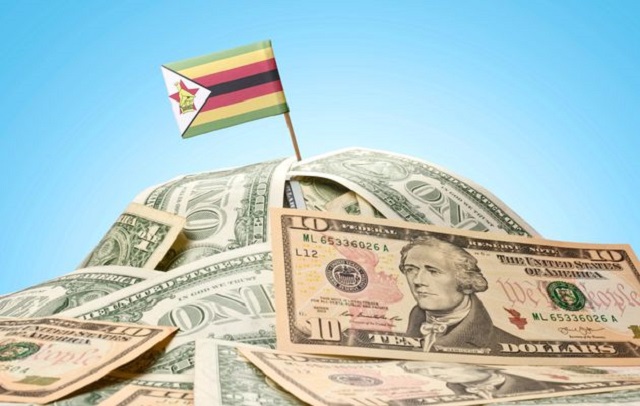
The Sunday News

Dr Bongani Ngwenya
Preamble:
THIS week’s writing attempts to unpack the economic performance of Zimbabwe since the adoption of the multi-currency regime or dollarisation.
It has become clear that the country failed to turn the use of multi-currency regime into a sustainable competitive advantage over its trading partners, particularly in the Sadc region. The major opportunity missed was the potential for multi-currency or dollarisation to attract massive foreign direct investment into the country.
As a result, the negative externalities of dollarisation, that is, the structural loss of monetary policy sovereignty has impacted negatively on the management of the multi-currency regime.
The basic issue that has been the centre of my argument is that Zimbabwe has been hamstrung by its lack of monetary policy sovereignty from the time the country adopted the multi-currency regime.
Our monetary authority, that is, the Reserve Bank of Zimbabwe lost the ability to control the supply of money in the economy through monetary policy instruments such as exchange devaluation or revaluation, productive open market operations, interest rates adjustments, printing of the domestic currency for the purposes of buying Government debt, etc.
Unpacking the economic performance of Zimbabwe since adoption of the multi-currency regime.
The period leading to hyperinflation saw the Zimbabwean dollar losing its aspect of being a store of value because the value of any biodegradable goods were now decreasing slower than the value of the money that was used to buy those goods.
If you were a farmer for example, you were better off holding on to your goods than exchanging them for money. The Zimbabwe currency could not serve as a medium of exchange because businesses were refusing to use it, favouring foreign currencies instead.
Lastly, the Zim dollar could not serve as a unit of account because it could not properly measure the value of the goods in the market — they were changing too rapidly.
The hyperinflation in Zimbabwe had all but killed the Zimbabwean dollar. In order to stabilise the economy, the Reserve Bank of Zimbabwe had to depend on a more stable currency. Hence, the adoption of the US dollar as the main store of value and transacting currency in the economy, even when it circulated alongside a basket of other currencies, such as the South African rand, the British pound, among others.
For the benefit of my readers who are not well versed with the language of economics, the economic performance of countries is measured in terms of the countries’ gross domestic product (GDP). GDP is a measure of national income and output for a given country’s economy. It is equal to the total expenditures for all final goods and services produced within the country in a stipulated period of time. The period immediately leading to the hyperinflation era, and hyperinflation itself that is, 2006, 2007, and 2008 was characterised by low GDP values.
Year 2006 for example, the GDP was $5,44 billion; 2007, $5,29bn; 2008, $4,42bn. This was the period before adoption of the multi-currency regime, climaxed by hyperinflation of 2008. The end of 2009 marked the beginning of the recovery period from hyperinflation, with a more than double GDP of $8,6bn.
Thereafter the GDP steadily increased, 2010 with $9,46bn; 2011, $10,96bn; 2012, $12,39bn; 2013, $13,49bn; 2014, $14,2bn.
The main contributing factor here, notwithstanding other factors as well was the significant US dollar reserves that the country had accumulated over years, increased diaspora remittances, now that foreign currencies were legal, and stability of commodities export earnings. The reserves more than matched the import bill requirement by then, and there was adequate fiscal balance deficit support. However, the recovery period was not matched with significant domestic production capacity utilisation increase. Instead the country continued to experience de-industrialisation.
As domestic production capacity failed to gain levels that would sustain domestic demand, the import bill ballooned to unsustainable levels to date. The net effect was to cancel or reverse the gains that were realised from steady growing GDP over the recovery period.
The year 2015 marked the turning point from the steady growth in GDP, with a GDP of $13,89bn. This phenomenon was not a surprise at all. This is the period the Zimbabwean economy started experiencing a sustainable negative inflation, that is, deflation which had started in the last quarter of 2014.
The gross domestic product growth rate shows a clearer picture of what I am talking about here. The years immediately leading to the hyperinflation of 2008, that is, 2006 and 2007 saw the country attaining negative growth of -3,5 percent -3,3 percent respectively, with the hyperinflation year itself suffocating to a -9,6 percent negative growth. However, the recovery period of 2009, 2010, 2011, 2012 saw positive growth rates of 5,3 percent; 11,4 percent, 1,9 percent and 10,6 percent respectively.
Lack of management of the multi-currency regime and failure to attract meaningful foreign direct investment became evident from 2013, with GDP growth rate slumping from 10,6 percent in 2012 to 4,5 percent; 3,9 percent in 2014 and 1,5 percent in 2015, with almost same level of predictions for 2016. Signs of economic distress became glaring, unfortunately with no solutions in place to reverse the negative trends. Quite significant has been the deflation phenomenon, the fiscus constrain, and eventually the cash crisis that the country is experiencing right now.
Economic growth slowed from 3,8 percent in 2014 to an estimated 1,5 percent in 2015 as a result of weak domestic demand, high public debt, tight liquidity conditions, drought, poor infrastructure, institutional weaknesses and an overvalued exchange rate with projected negative inflation in 2016 and 2017 already made, among other factors.
The fiscal space will remain constrained due to underperformance of domestic revenues, increase in public expenditures, depressed exports, limited foreign direct investment and other capital inflows into the country. This will continue undermining development expenditure and social services provision in both urban and rural areas, exacerbating the incidence of poverty. Financing for urban development, both housing and transport, will continue being negatively affected.
The country remains in debt distress, having failed to meet deadline to clear the debt arrears on several times now. This phenomenon is exacerbated by the continued lack of a diversified export base and declining terms of trade that make it difficult for the country to adjust to changing world demand for tradable goods. These structural weaknesses will continue constraining the country’s ability to generate high and sustainable growth that is necessary to mitigate the debt distress.
In conclusion, Zimbabwe’s economy, once one of the strongest in Africa, has one of the lowest GDP per capita in the world today. The sluggish growth is expected to endure as the country is failing to address structural obstacles to growth such as limited capital resource, deficient infrastructure, failure to deal with the corruption scourge decisively, and foreign direct investment inflows.
Dr Bongani Ngwenya is a Bulawayo-based economist and Senior lecturer at Solusi University’s Post-Graduate School of Business. He can be contacted on [email protected]/[email protected]



